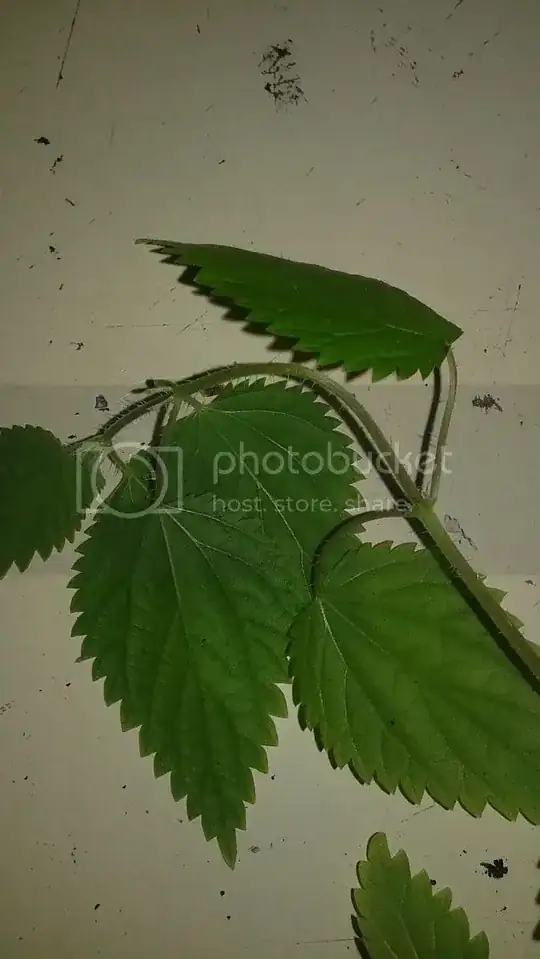I have no idea what this plant came from, where it came from or any thing about it. What I do know is its leaves are covered in little hairs, there's little thorns growing all over it and just by rubbing its leaf it burns you and leaves a red mark as well as blisters. It stung my mother and I would like to know what it is so I can help with a remedy.
-
2@stormy's ID is correct. Note that one of the substances that cause the itch/hives is histamine, the same stuff that your body releases as allergy response. So even if you don't have a remedy at hand, your body will dissolve the "poison" within a few hours. Uncomfortable, yes, but not dangerous. – Stephie Jul 15 '15 at 04:42
-
1It's a valuable plant in that some butterflies use it as a place to feed and deposit eggs. If you get stung by it, despite the almost overwhelming temptation to rub the area, do not touch it, nor let anything else touch the area for about 20 minutes. It will pass very quickly if you leave it alone, but if you rub or touch it at all, it will continue to hurt for hours... I speak from experience! – Bamboo Jul 15 '15 at 12:29
-
This is why one uses 'antihistamine' to help reduce the histamines and hopefully if you get stung a second time the reaction isn't going to be worse. The 'stingers' are on the under side of the leaf only...they dislodge in your skin and rubbing causes the stinger's sacs to break...no fun! – stormy Jul 23 '15 at 19:45
2 Answers
Urtica dioica - Stinging nettles...! Very valuable wilderness food. Truly! If you grab a leaf touching just the topside you can mash it (eliminating the chemicals on the underside of the leaf) roll it in a ball and eat it! We had to do this in Wilderness Survival classes. Interesting. Even better, this stuff is almost exactly like spinach steamed. Yummmm. I can't remember the remedy at this moment. Let us know what you find.
This attachment has a great paragraph on remedies!! Definitely use cortisone or benadryl and there are some topical soothers you can make at home...
- 14,039
- 3
- 19
- 44
- 40,098
- 3
- 31
- 75
-
@Stephie - was there supposed to be a link under "This attachment?" – That Idiot Jul 15 '15 at 13:38
-
Just click on the botanical name in blue? I just did it and it worked. I am definitely very bad with technical details (and brevity, being specific, sigh)! Let me know if I've screwed up with adding the attachment, OK? Thanx!! – stormy Jul 16 '15 at 03:10
-
1In San Francisco the local organic market sells it (the tender new growth) and the local pizza place uses it as a topping. Any cooking gets rid of the stinging. – Rick Jul 22 '15 at 13:28
-
I like them in broth (some rice, a lot of nettles, normal clear broth). If they don't sting (and having regular flowers), it could be _Lamium_ (dead-nettles). – Giacomo Catenazzi Nov 22 '17 at 12:34
-
Here in Bosnia we use it to make delicous nettle and cheese pie :) Also dried leafs can be used as herbal tea. – False Identity Nov 22 '17 at 13:12
-
In wilderness awareness classes, we were taught to grab the leaf by the top without touching beneath the leaf. Bringing the top of the leaf together you squish the 'stingers', keep squishing, roll into a ball and pop it in your mouth...raw spinach? No stinging. Cooking most certainly eliminates the stinging chemicals. And tastier than spinach and I love spinach. – stormy Nov 24 '17 at 02:40
-
@Stephie I tried my attachment and it worked. There is a paragraph subtitled in the body of the article...are you not able to pull up my attachment? – stormy Nov 24 '17 at 02:42
It's called stinging nettle here in the US. The cure for the stings grows right by the stinging nettle: jewelweed. I don't say this about many things but jewelweed is great for taking away pain from stinging nettle, and helps ease the irritation of poison ivy. I've used it for both of those things. IME the jewelweed works better for PI than any other medicine, OTC or prescription.
Search for jewelweed flower images. They are very distinct.
- 1,726
- 10
- 18
